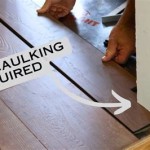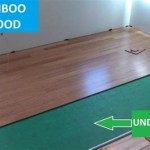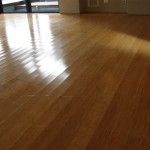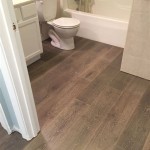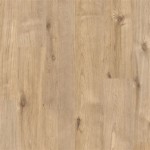Laying Vinyl Flooring on Uneven Floorboards: A Comprehensive Guide
Transforming uneven floorboards with vinyl flooring can enhance the aesthetics and comfort of your living space. However, achieving a seamless and durable installation requires careful preparation and meticulous attention to detail. This guide will delve into the essential aspects of laying vinyl flooring on uneven floorboards, ensuring a successful and satisfying project.
Assessing Floor Condition
Before embarking on the installation, it's crucial to assess the condition of your floorboards. Significant unevenness, such as dips or bumps exceeding 3mm, may require additional preparation. Loose or creaky boards should be secured or replaced to prevent potential movement and damage.
Choosing the Right Vinyl Flooring
Selecting the appropriate vinyl flooring type is essential for durability and ease of installation on uneven surfaces. Rigid core vinyl flooring, known for its stability and resistance to moisture, is an excellent choice for this application. It can withstand minor imperfections and provide a solid foundation for the new flooring.
Subfloor Preparation
Uneven floorboards necessitate a smooth and level subfloor to ensure a flawless vinyl installation. This may require leveling the boards using self-leveling compound, plywood sheets, or leveling mats. Remember to allow ample time for the leveling compound to dry completely before proceeding.
Underlayment Installation
An underlayment provides cushioning and moisture protection for your vinyl flooring. Choose an underlayment suitable for uneven surfaces, such as cork or foam with a thickness of at least 3mm. Cut the underlayment to fit the floor space and ensure it is installed properly.
Dry-Fitting the Vinyl Planks
Before committing to the adhesive, dry-fit the vinyl planks to ensure a precise layout and identify any potential cutting needs. Start from a corner and gradually work your way across the room. Adjust the planks carefully to compensate for any unevenness.
Applying Adhesive
Once the dry-fitting is complete, it's time to apply the adhesive. Use a notched trowel to spread a thin, even layer of adhesive to the subfloor. Follow the manufacturer's instructions for the type of adhesive used. Allow the adhesive to rest for the recommended time before placing the vinyl planks.
Installing the Vinyl Planks
Carefully place the vinyl planks onto the adhesive, pressing firmly to ensure good contact. Use a rolling pin or hand roller to further secure the planks and eliminate any air bubbles. Work in sections, starting from the center and progressing towards the edges.
Finishing Touches
Once all the vinyl planks are installed, trim any excess material around the edges. Seal the edges with caulk to prevent moisture penetration and create a smooth, finished look. Allow the flooring to cure for the recommended time before walking on it.
By following these steps and paying attention to detail, you can successfully lay vinyl flooring on uneven floorboards, creating a stylish and long-lasting surface for your home.

Should We Be Concerned About Vinyl Plank Installed Over Uneven Floors

10 Beginner Mistakes Installing Vinyl Plank Flooring

How Can I Prepare Slightly Uneven Tiled Floor For Vinyl Planks Home Improvement Stack Exchange

Laying Vinyl Planks The Right Way Expert Guide By Fantastic Handyman

How To Lay Vinyl Flooring Checkatrade

How To Install Vinyl Plank Flooring On Uneven Floor

Laying Laminate On Uneven Flooring How To Fix Your Subfloor Mersey

How To Correctly Level Wood Flooring Help Advice Leader Floors

What To Do When Floors Are Diffe Heights Vinyl Plank Installation

20 Tips For A Great Vinyl Plank Flooring Installation
See Also

